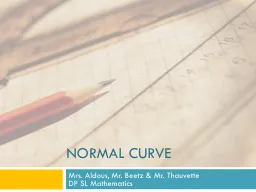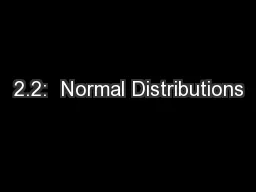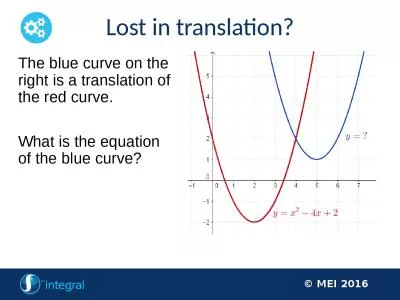PPT-normal curve
Author : sherrill-nordquist | Published Date : 2017-08-09
Mrs Aldous Mr Beetz amp Mr Thauvette DP SL Mathematics Normal Distribution You should be able to Describe the properties of a normal distribution with mean and
Presentation Embed Code
Download Presentation
Download Presentation The PPT/PDF document "normal curve" is the property of its rightful owner. Permission is granted to download and print the materials on this website for personal, non-commercial use only, and to display it on your personal computer provided you do not modify the materials and that you retain all copyright notices contained in the materials. By downloading content from our website, you accept the terms of this agreement.
normal curve: Transcript
Download Rules Of Document
"normal curve"The content belongs to its owner. You may download and print it for personal use, without modification, and keep all copyright notices. By downloading, you agree to these terms.
Related Documents














